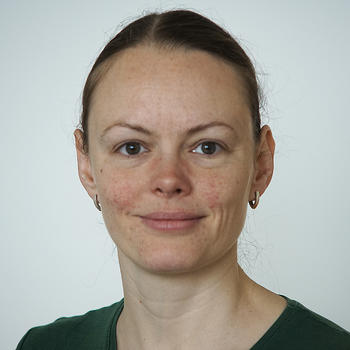Dr. Ursula Neu

Structural Glycovirology
Group Leader
All eukaryotic cells are covered in a dense layer of carbohydrates that are key to cell-cell communication, development, neurobiology and immune function. In addition, many human viruses interact with cell-surface carbohydrates as receptors on their host cells in order to initiate infection. Carbohydrate structures are expressed in tissue- and species-specific patterns, and the availability of the receptor carbohydrate influences viral tissue tropism and host range. Viruses also encounter carbohydrates in the extracellular matrix and the environment on their way from one host cell to another. Some of these extracellular glycans sequester viruses from cells and are part of innate immunity, while others can render viruses more infectious. In any case, the specificity and affinity of viral proteins for carbohydrates determines viral spread, transmission and pathogenesis. However, protein-carbohydrate interactions are less well understood than protein-protein or protein-nucleic acid interactions. Moreover, virus-carbohydrate interactions are multivalent, with many shallow, low-affinity binding sites acting in concert.
Our aim is to determine the rules of engagement between viruses and relevant carbohydrate structures. We determine the specificity of viral proteins for carbohydrates by glycobiological and biophysics approaches and solve the structures of cognate protein-carbohydrate complexes by x-ray crystallography. Our research advances our understanding of viral spread and infection and provides the structural basis for the design of novel antivirals. In addition, it shapes our growing understanding of protein-carbohydrate interactions.
We are grateful to acknowledge funding by:
- Emmy Noether Programme of the DFG
- SFB 765
Selected publications:
- Kallewaard-Lelay N.*, Corti D.*, Collins P.J.*, Neu U.*, …, Lanzavecchia A.+, Zhu Q.+, Gamblin S.J.+, and Skehel J.J.+ (2016) Structure and function analysis of a therapeutic monoclonal antibody that recognizes all subtypes of influenza A. Cell 166(3):596-608
- Buch M.H.C.*, Liaci A.M.*, O’Hara S.D., Garcea R.L., Neu U.+, and Stehle T+. (2015) Structural and Functional Analysis of Murine Polyomavirus Capsid Proteins Establish the Determinants of Ligand Recognition and Pathogenicity. PLoS Pathogens 11(10):e1005104
- Neu U.*, Khan Z. M.*, Schuch B.*, Sá Palma A., Liu Y., Pawlita M., Feizi T., and Stehle T. (2013) Structures of B-lymphotropic Polyomavirus VP1 in complex with oligosaccharide ligands. PLoS Pathog. 9(10):e1003714
- Neu U.*, Allen S.*, Blaum B.S., Liu, Y., Frank, M., Sá Palma, A., Ströh, L.J., Feizi, T., Peters T., Atwood W.J., and Stehle, T. (2013) A structure-guided mutation in the major capsid protein retargets BK Polyomavirus. PLoS Pathog. 9(10):e1003688
- Neu U.*, Hengel H.*, Blaum B.S., Schowalter R.M., Macejak D., Gilbert M., Wakarchuk W.W., Imamura A., Ando H., Kiso M., Arnberg N., Garcea R.L., Peters T., Buck C.B., and Stehle T. (2012) Structures of Merkel Cell Polyomavirus VP1 complexes define a sialic acid binding site required for infection. PLoS Pathog. 8(7):e1002738
*Co-first authors +Co-corresponding authors
Full list of publications: https://www.ncbi.nlm.nih.gov/pubmed/?term=ursula+neu
